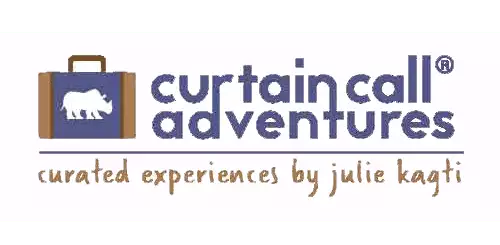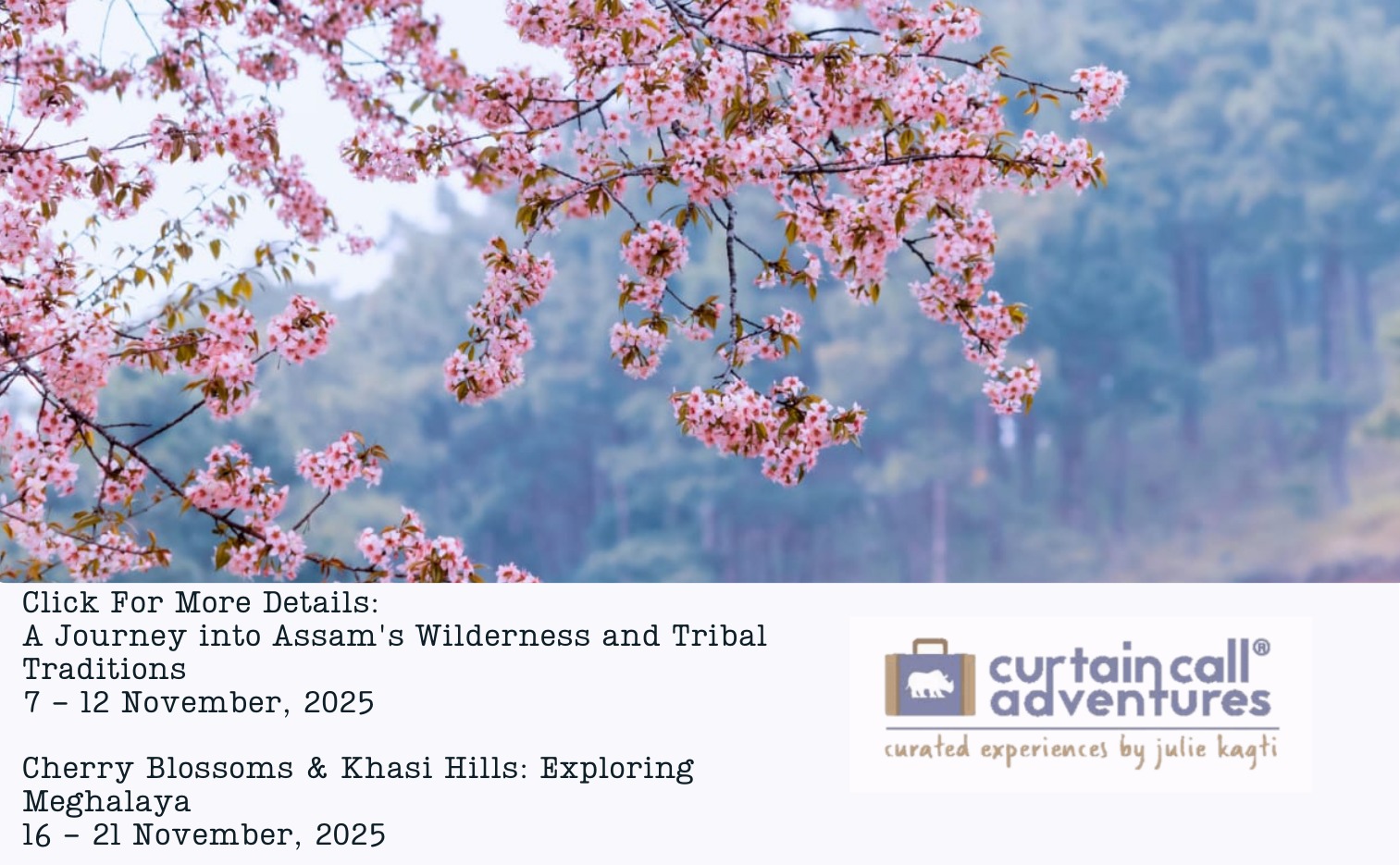
A photo journal from a trip to Assam and the Tura hills of Meghalaya in November 2019.
Day 1
We began by exploring the markets of Guwahati. The reason the produce (elephant apples, Indian ‘olives’, and banana varieties) looks so good is because most come fresh from the farms right across the river.
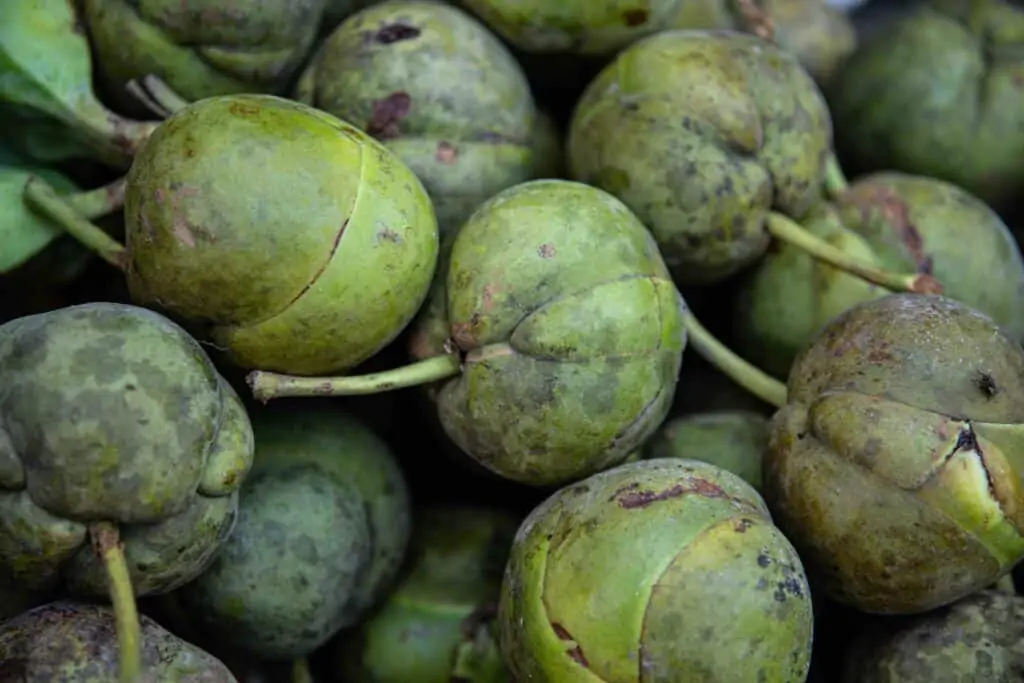
Then as we headed off toward our first stop, we had a quick pit stop lunch: Assamese thali. The knockout, and ingredient I’m most looking forward to tinkering with personally at home, was the very Otenga we saw in the markets earlier. Tough and starchy but gives a sour kick to the gravy. Kind of like raw mango and pairs well with dried fish. The Full thali was a chicken gravy, fish with otenga, pumpkin fries, khar (raw papaya), and two chutneys: curry leaves and green chillies / soaked daal and mustard. Served with lots of rice.

DAY 2
We continued the drive into Assam to meet the Sabarmathi bell metal crafters, the second largest industry after bamboo here. Bell metal plays an important role in both domestic and religious purposes. It’s a copper and tin alloy; the tin gives it that unique resonance used in cymbals and (obviously) bells.
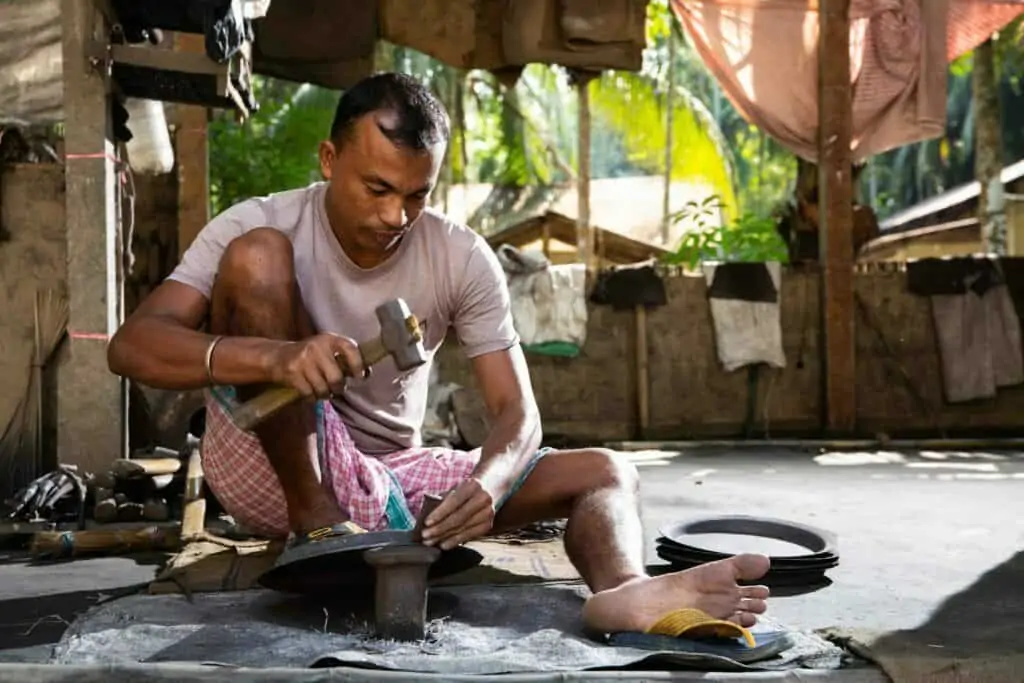
Passed by verdant landscapes on the drive, from villagers wading through muddy waters for fish, fields of amber grain ripe for picking, and humid hillscapes draped by teal mountains in the back.
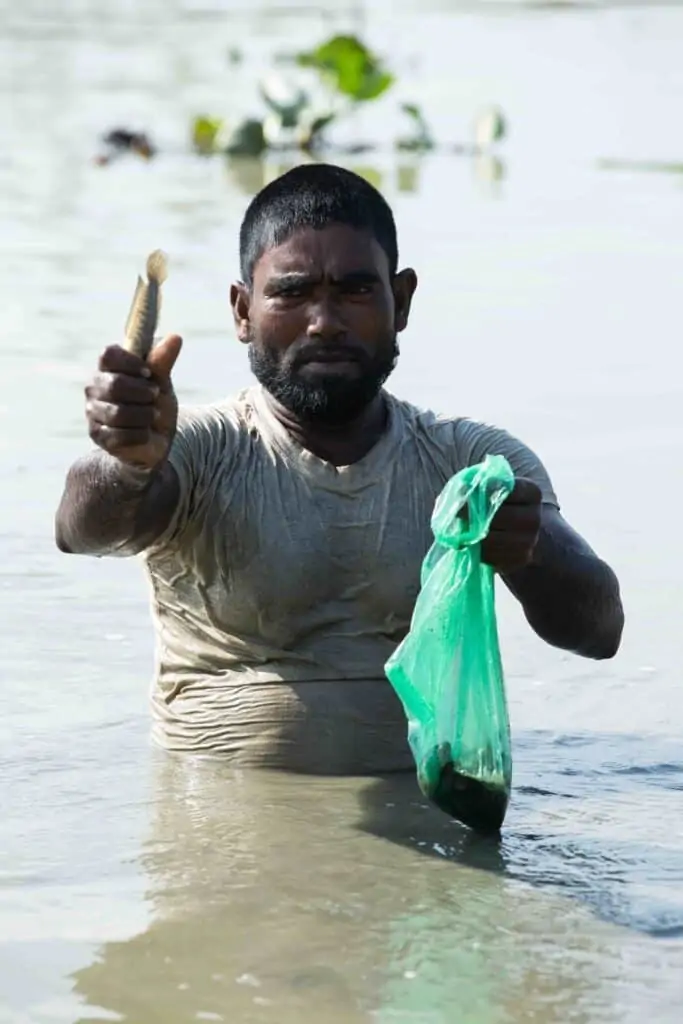
Reached the Bodo Tribe who live in Assam. The best word to describe them is contained: their necessities, such as a diet of vegetables, rice, and fish, all exist in the space around them. Although scattered throughout the state of Assam the Bodo retain their individual identities. If asked, are you Assamese? They promptly and proudly will respond: no I am Bodo.
The palm like trees which cover these lands along with Cane and Bamboo form the foundation of building materials as pillars and roofing and cooking utensils. But what I found most interesting about the Bodo wastheir faith. The cactus-like tree here is called Sijou which translates to tallest atma or ‘master of life’. In their nature focused faith, Bathou, plants as such are revered for their ability to grow tall and be regrown using trimmings from the original.
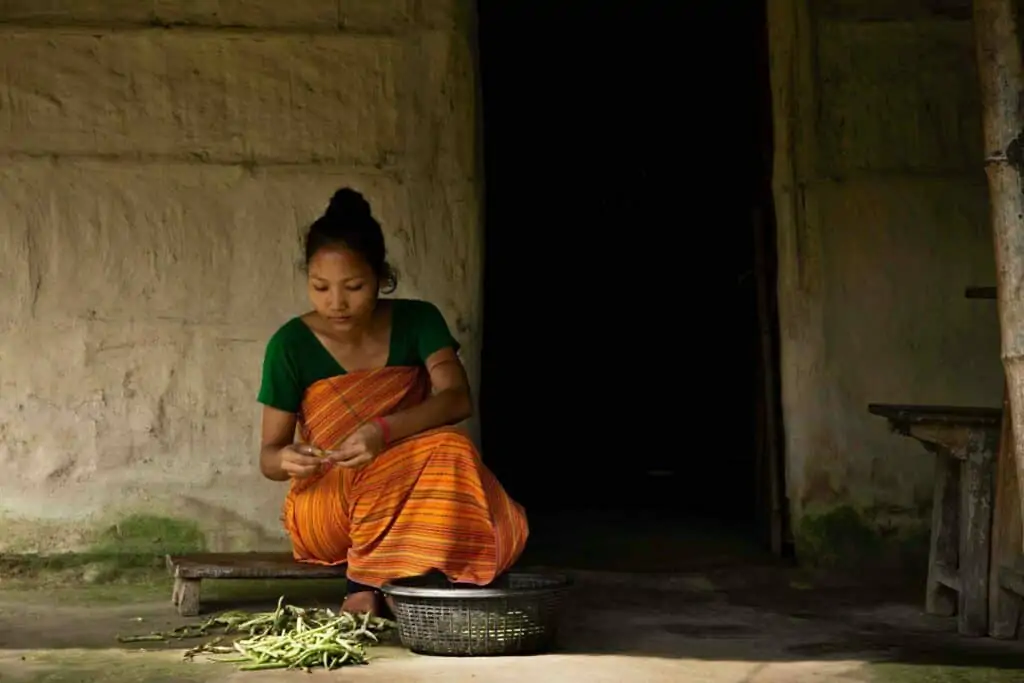
Day 3
Marked our entry looping back into the hills of Meghalaya for the Wangala festival. But before the festivities begin, we explored the surrounding areas like this bridge, “The Gateway of Tura”, has been the only thing that connects the tribes of the hills to the markets of Tura for decades.
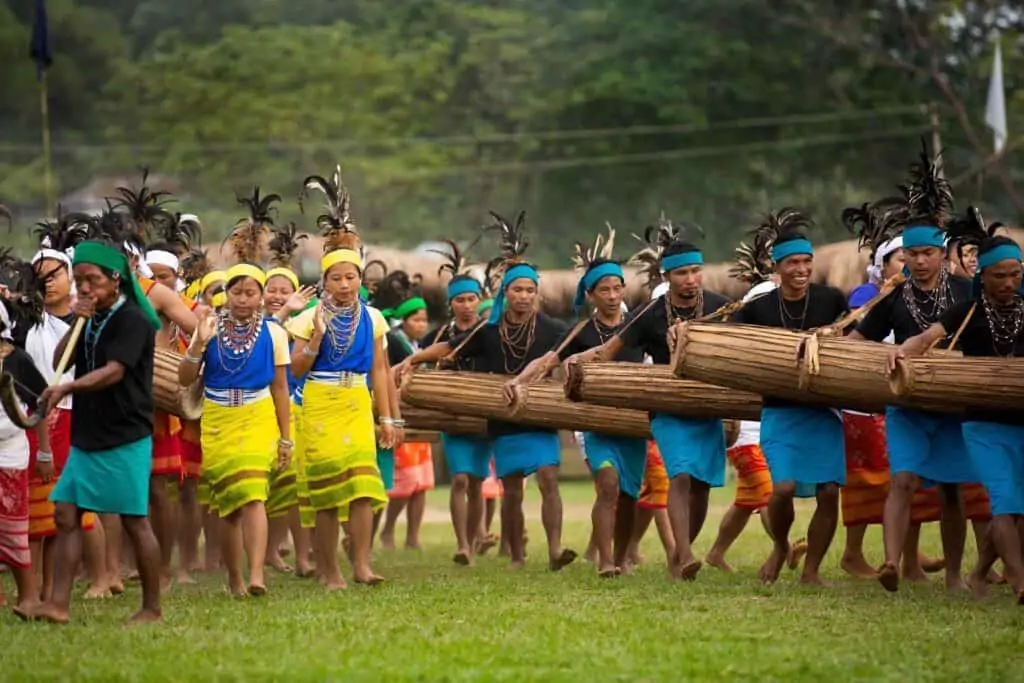
The Wangala Festival is known as the festival of 100 drums. It’s the tribe’s “thanksgiving” in which during an amazing two day affair ten of the Garo clans come together for dance competitions, offer thanks to the deities for the harvest, and is followed by general (rice-beer inclusive) merrymaking.
My favorite tidbit about the dances was that the moves are very much inspired by daily rituals, such as: ‘sowing of rice’, ‘search of crabs’, ‘scarring of bad spirits’, and even courtship. For a culture that existed without written form, these dances not only exist as a celebration, but as a form of knowledge transfer.
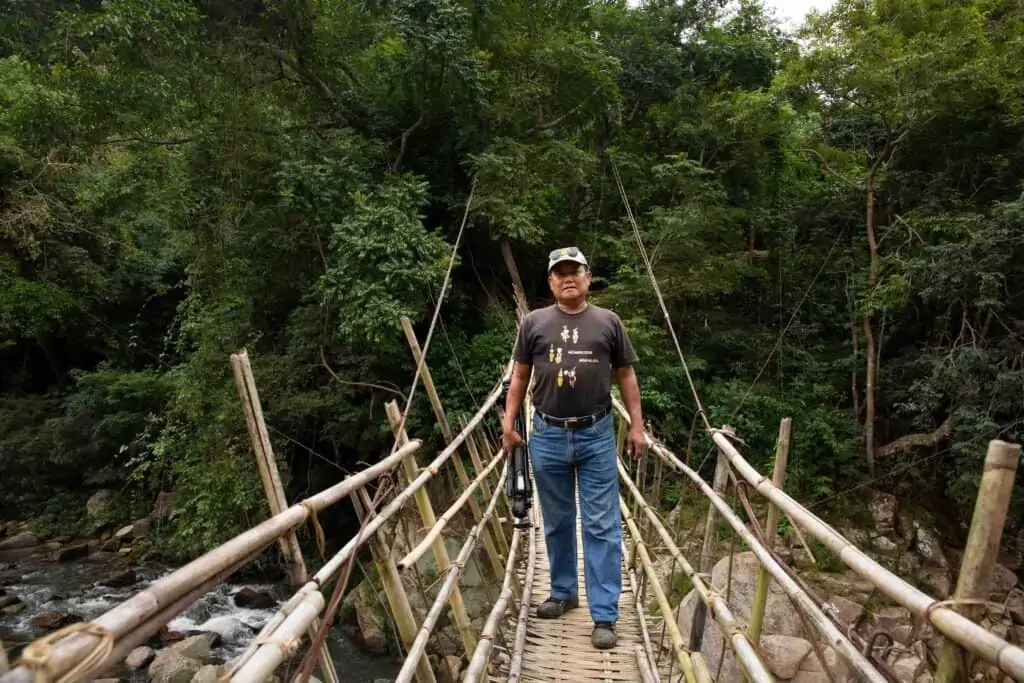
Day 4
Moving on to the meats of Meghalaya and the Garo tribe — although chicken has now become ubiquitous, duck was once the star poultry of the hills. And given the river adjacent nature of Meghalaya, local fish is also frequently eaten — grilled, cooked into stews, and ground into chutneys.
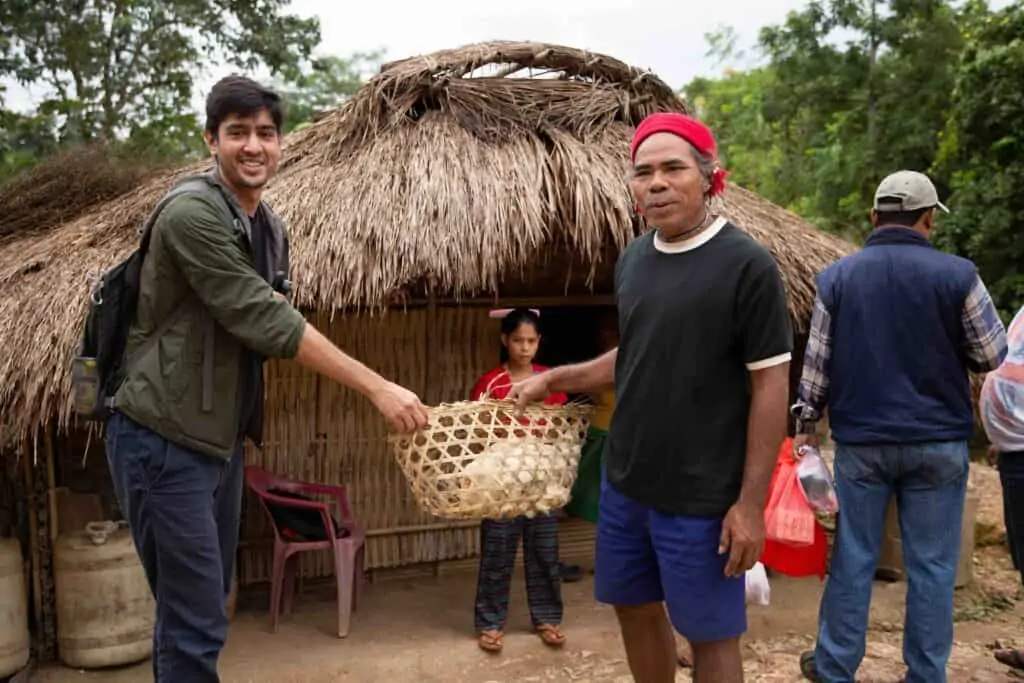
As Bivo our Garo guide explains it, the tribes here were largely hunters and thus meat was central to the diet. We picked up a live chicken as a gift for the Garo clan we were spending the day cooking with. The Garo believe that our spirits live on after we pass away — and these human like statues are scattered amongst their village often built in that remembrance as a place that their spirits might dwell onward.
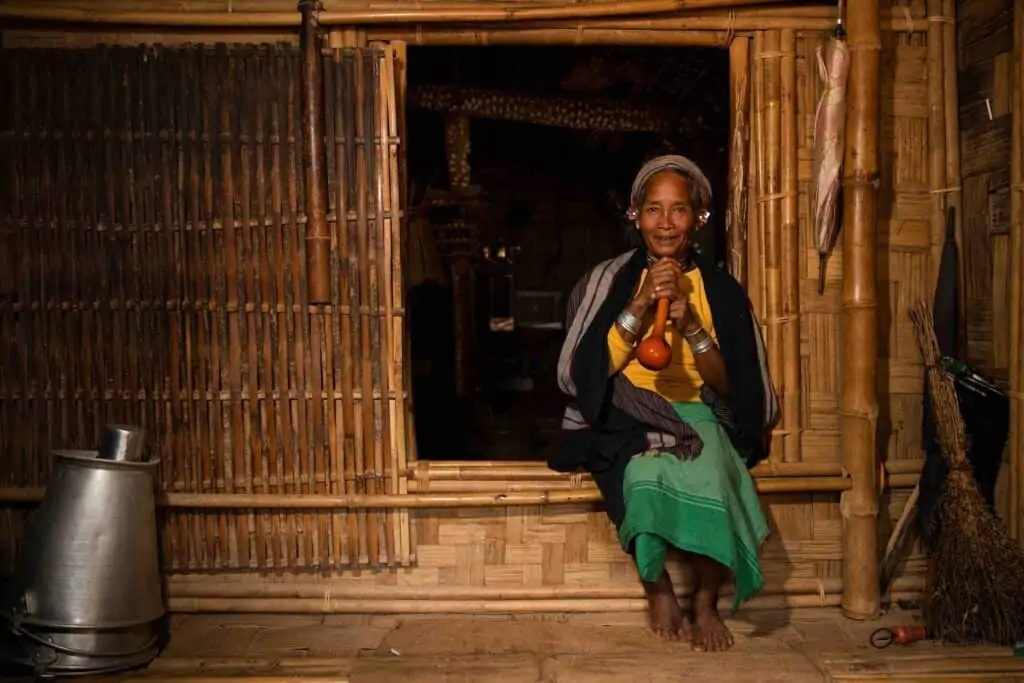
The lifestyle and abodes of the Garo tribe felt removed from both space and time. But also, strangely not that much so. One of the things I wrestle with while traveling to these remote areas is the idea of expectation vs. reality: I almost feel compelled to only show what people might think of as ‘authentic’ tribal experiences (animalistic adornments, bizarre situations). But the reality is often just a bunch of dudes in western-ized clothing playing a game of carrom to bide away their Sunday afternoon.
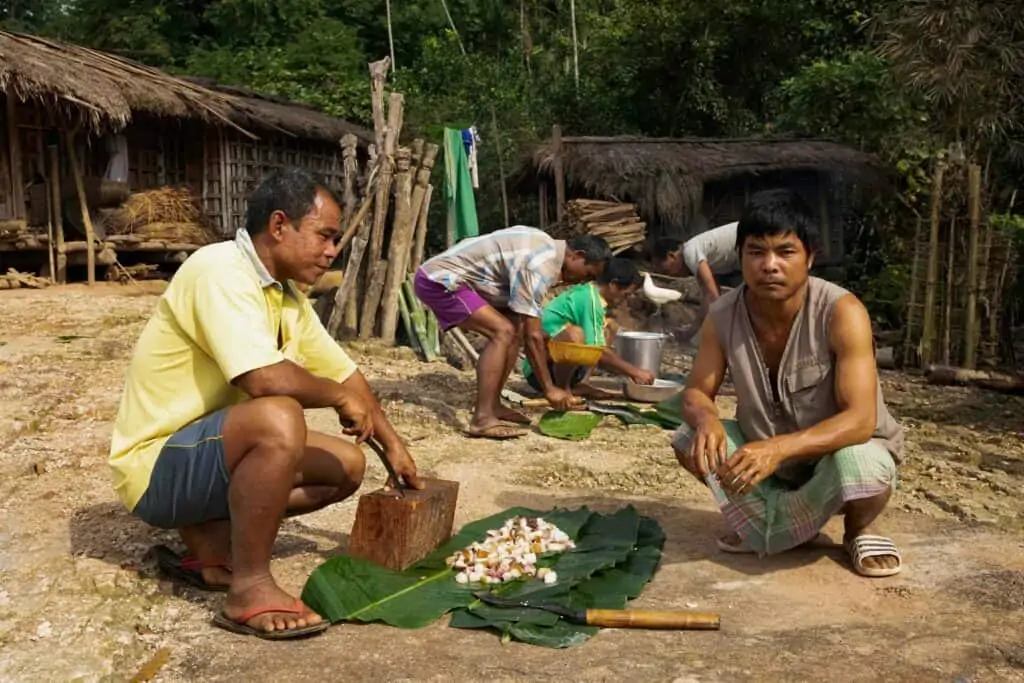
Then finally the Garo feast began. We did our best to give distance from the chief and his family while we learned about their cuisine, but it was irresistible. The ladies for the most part handled the cooking, while the men in another room drank rice beer and celebrated their victory at the Wangala Festival.
Part of this meal was the last major meat group: pork — it’s both super fatty and flavorful here with black pigs wandering about. Two of the dishes of our feast were ‘ wak breng’ or pork cooked in bamboo shoots and ‘do’o kappa or chicken in gravy cooked with ash water (known as ‘kalchi’) — it’s effects on taste remain debatable, but some science has gone to support its role in mineral supplementation and decreased cooking times.
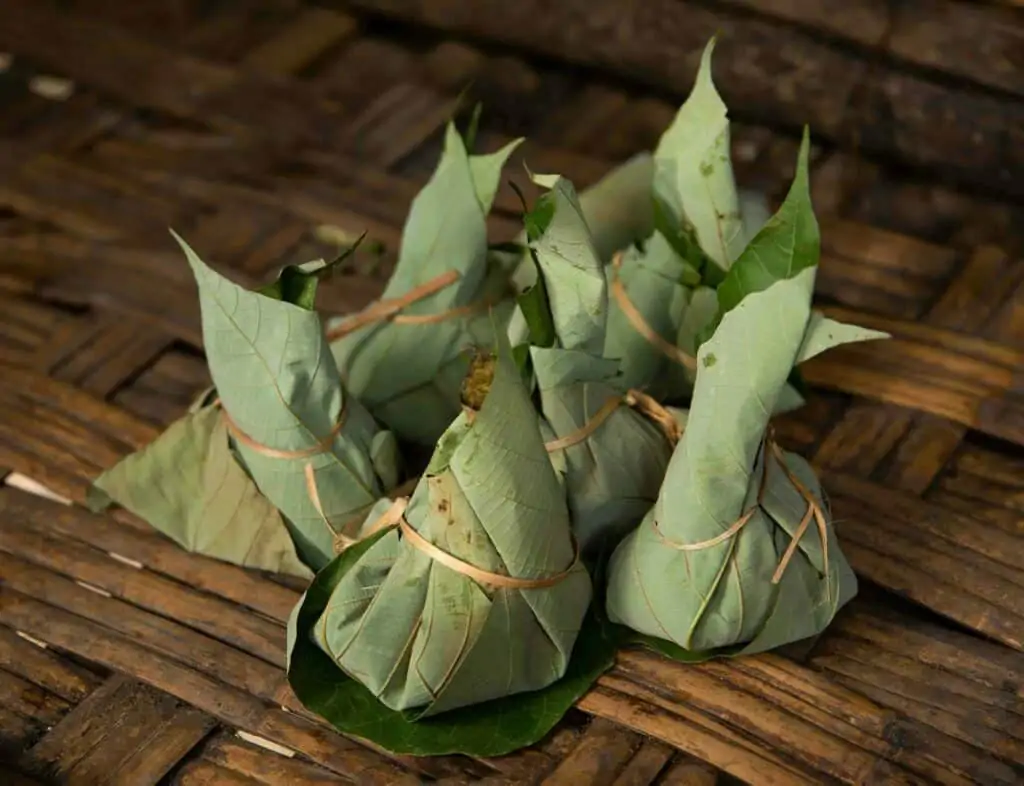
Medicinal herbs also play an important role in the cuisine. The ‘sam-sweng’ herb means ‘smelly’ or ‘pungent’. Both the flowers and leaves are mixed into the pork — the rest of the preparation of the ‘brenga’ is pretty simple with green chillies, ginger, and salt. The pork, herbs, and spices are all stuffed into bamboo with a little bit of water — oil isn’t used much in the cuisine, with most dishes being boiled or steamed. Meanwhile, back
at the inside kitchens, some vegetable dishes are being prepared — eggplant and long green beans– but even these beans aren’t vegetarian with fermented fish paste added giving them the fragrant kick.
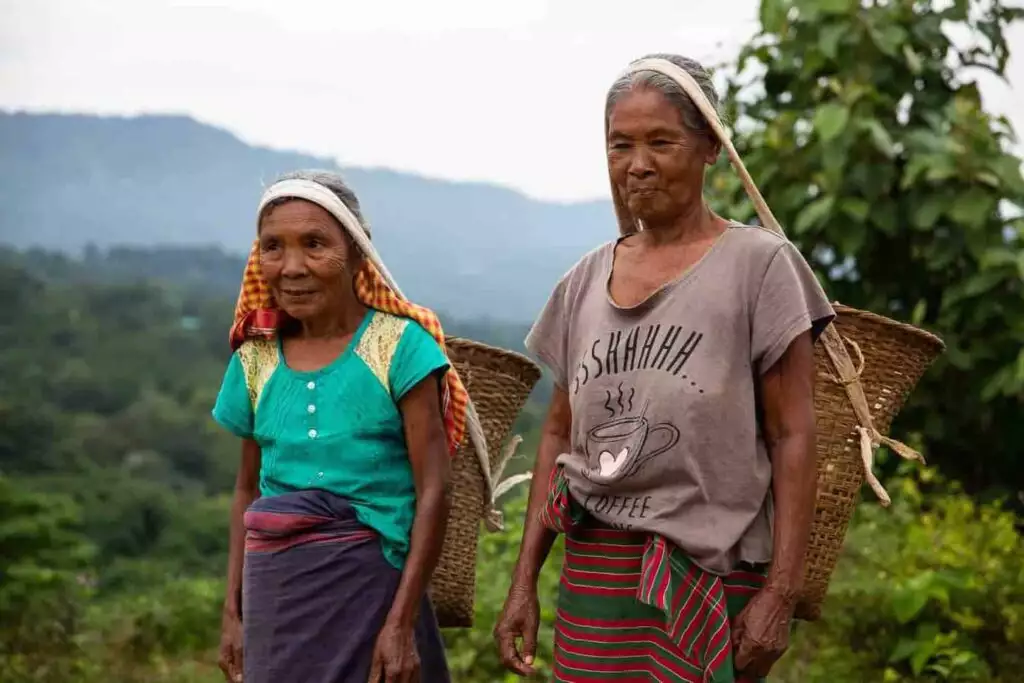
Rice, the main grain of the Garo people. The paddy fields embedded within these hills are filled with rice during the summers, often steamed inside plant leaves giving them their stickiness and imparting an earthy smell (minil rice). With crop rotations, the land of the rice is swapped for other produce such as mustard greens. Although quickly being replaced by permanent farm plots for cash crops, the Garo once heavily relied on ‘jhum cultivation’ or slash n’ burn farming. With a small population and vast access to land, they would clear areas, plant a crop, and after harvest move onto other lands returning to the originals after 8-10 years.

Day 5
The last stop on this road-trip is the Kulsi River back over in Assam where we finally got to learn more about ‘Otenga’ (tenga meaning sour) or Elephant Apple. Here we are preparing a sour fish gravy: start with mustard oil and chili peppers, toss in the otenga, add semi-fried fish, turmeric, and salt, and finish it off with rice water to thicken. Some of the other stars in the Assamese thali are fiddlehead fern, fish chutney, duck curry (finally!) and potato and beans subji.
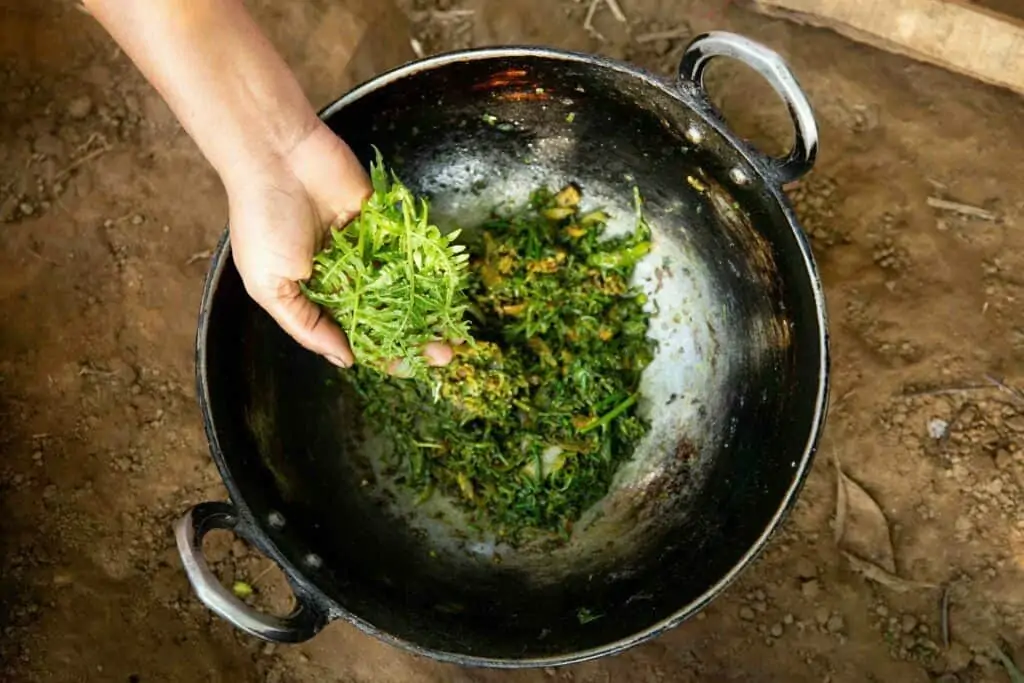
The meal was followed by a river ride in the Kulsi watching river dolphins, calling to close Curtain Call Adventure’s feast of sights and bites alike.
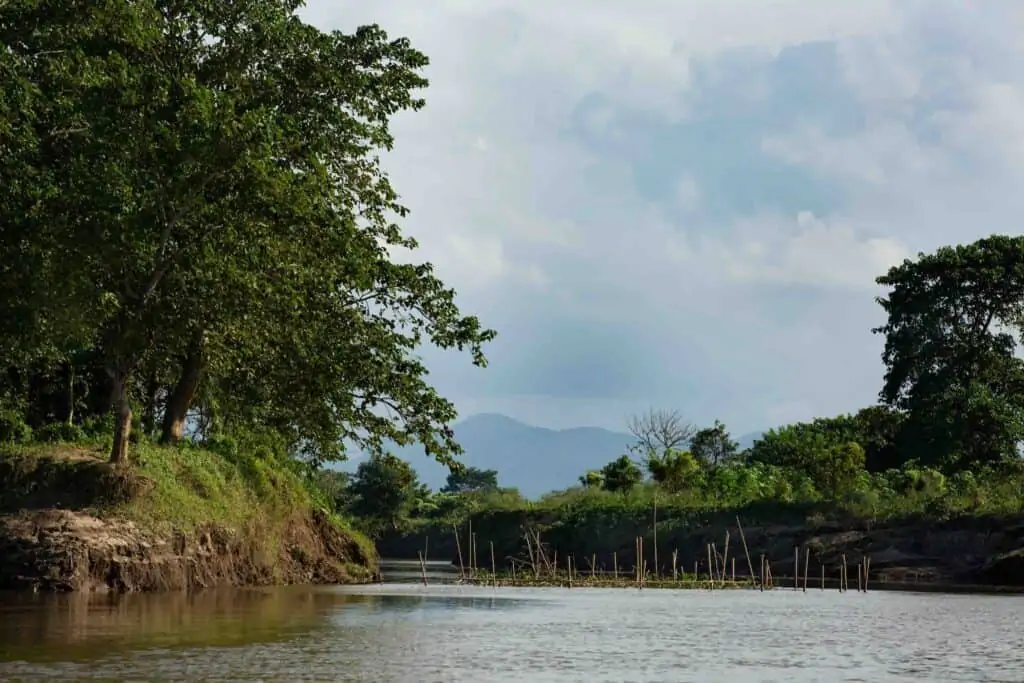
About the author – Varud Gupta’s first book, Bhagwaan Ke Pakwaan or Food of The Gods, is an exploration of the intersection of food and faith in India and won the 2019 Gourmand India award for “Peace” and “First Cookbook.” His recently released graphic novel, Chhotu: A Tale of Partition and Love, is a coming of age story set in 1947 Chandni Chowk. It received Comic Con India’s 2020 award for “Best Writer”.
About the photographer – Shalini Shiv Prasad is a professional photographer based in Bangalore and is the founder of Orka Photography. Her work includes portraiture, travel , architecture and product photography.
